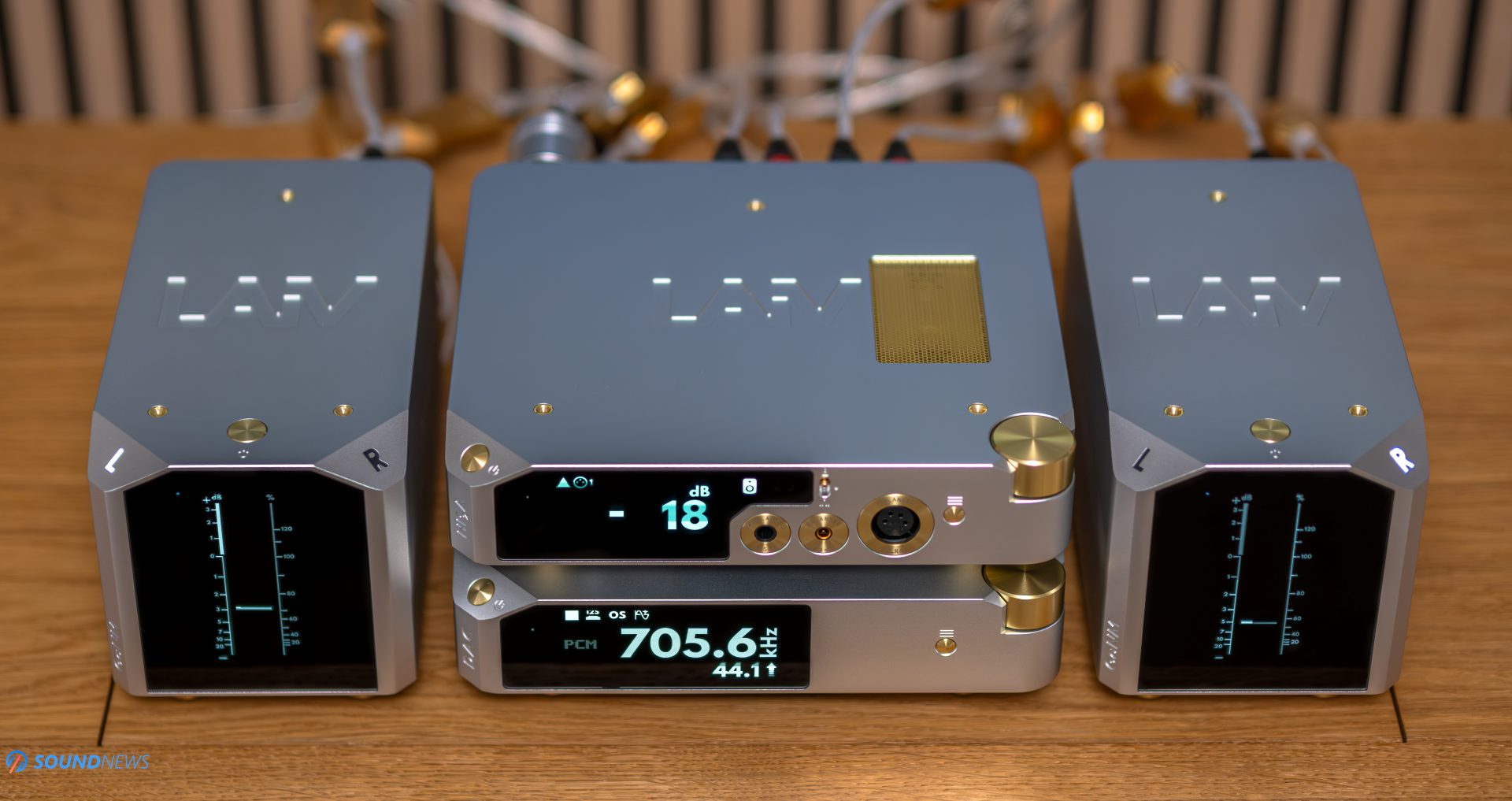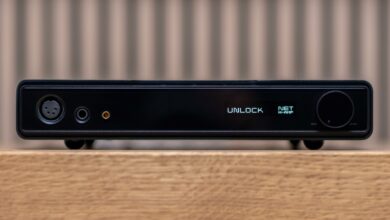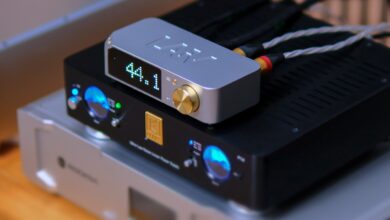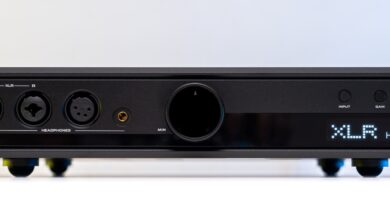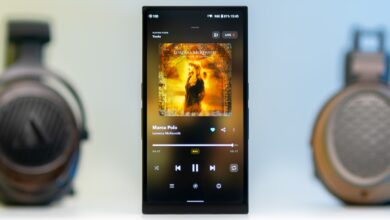LAiV Harmony GaNM Mono Amplifiers Review – Tiny but Mighty!
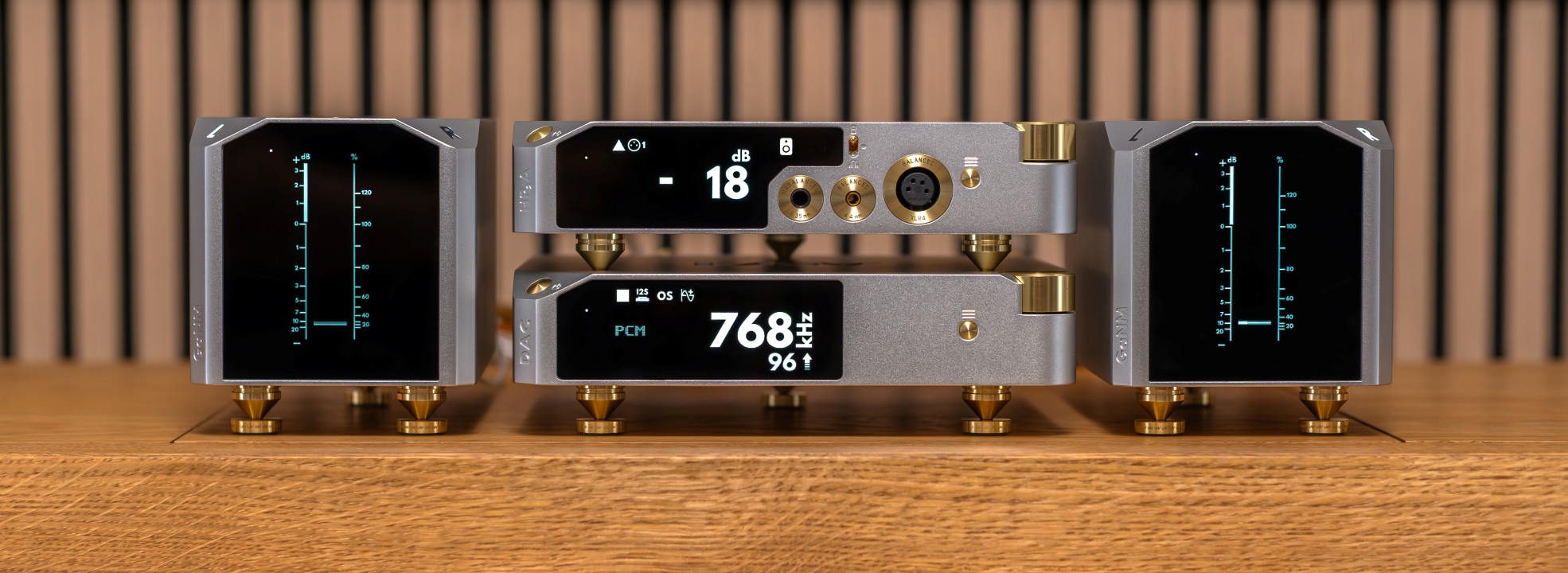
If there’s an audio brand that took the world by storm in 2024, it’s definitely LAiV Audio. These guys didn’t invest all of their knowledge solely into a great-sounding lineup. Nope. They combined outstanding looks, excellent build quality, and attention to the smallest details with one of the highest WAF (wife acceptance factor) ratings we’ve experienced lately. After unboxing the Harmony DAC last year, it was clear that these guys understand what high-end audio is all about. It’s not only about the sonics; it’s a full sensory experience where everything matters, even the packaging, the UIs, and all those small details combined.
Once we tried the HP2A in the comfort of our homes, it became evident that no single feature overshadowed the others, as often happens with 2-in-1 devices. It was equally impressive as a headphone amplifier and as a preamplifier. Since the Harmony DAC lacks volume controls, it was the obvious choice for the stereophile and head-fier in you. We still recommend it today, and if you’re dealing with space constraints, I can’t think of a better 2-in-1 device.
They already have a flagship DAC in their portfolio, as well as a similarly sized preamp & headamp combo. It was only a matter of when and not if—that a power amplifier, or better yet, a power amp duo (mono amplifiers), would be revealed. And we’re honored to unveil a grand opening for their brand-new GaNM monoblock amplifiers.
If you’re a returning visitor, then you know that the grumpy old Sandu has been rocking mono amplifiers for several years now. And yes, I can confidently say that there’s no integrated amplifier that can beat the performance of a stand-alone preamp plus monoblock amplifier combo. Why? Several reasons: mono amps eliminate channel crosstalk distortion, space constraints are no longer an issue, and you can push them to the limits of your imagination as an audio engineer. Power supplies are no longer shared, and with all these advantages, you get a no-compromise sound. I know many of you love it when an all-in-one feature-packed unit sounds great and does many things, but I prefer separate components that excel at their singular purpose, which is even better when they do it perfectly.
LAiV Audio truly understands global economics, and holding a master’s degree in banking and economics myself, I appreciate how they operate. It’s reassuring to see that LAiV isn’t driven by greed but by a close, personal approach, offering high-end products without astronomical prices. These, however, are their most expensive creations, retailing at $4,494 in the USA and €5,129 in Europe. But hold on a second, consider that you’re getting: two amplifiers, two CNC-machined cases, and twice the power to drive your loudspeakers.
Their feature set is stripped to the bare minimum for the shortest and purest signal path. There’s no DAC section, preamp, headphone amp, or Bluetooth receiver onboard, as these are dedicated dual mono power amplifiers with a single task, and they perform it with greater success.
Since these are part of their Harmony lineup, they naturally represent the top of the line, offering excellent measurements and presumably the best subjective performance. Like the Harmony DAC and Harmony HP2A before them, the newest members of the Harmony lineage feature subtle golden accents and similar design cues, clear hints of LAiV Audio’s design language. I’ll be testing them with a challenging pair of loudspeakers that demand plenty of current to properly control their diamond woofers and planar tweeters. I’m also curious about the Class-D power supply and what all the fuss is about these Gallium Nitride MOSFETs. So, what are we waiting for? Let’s dive deep into them!
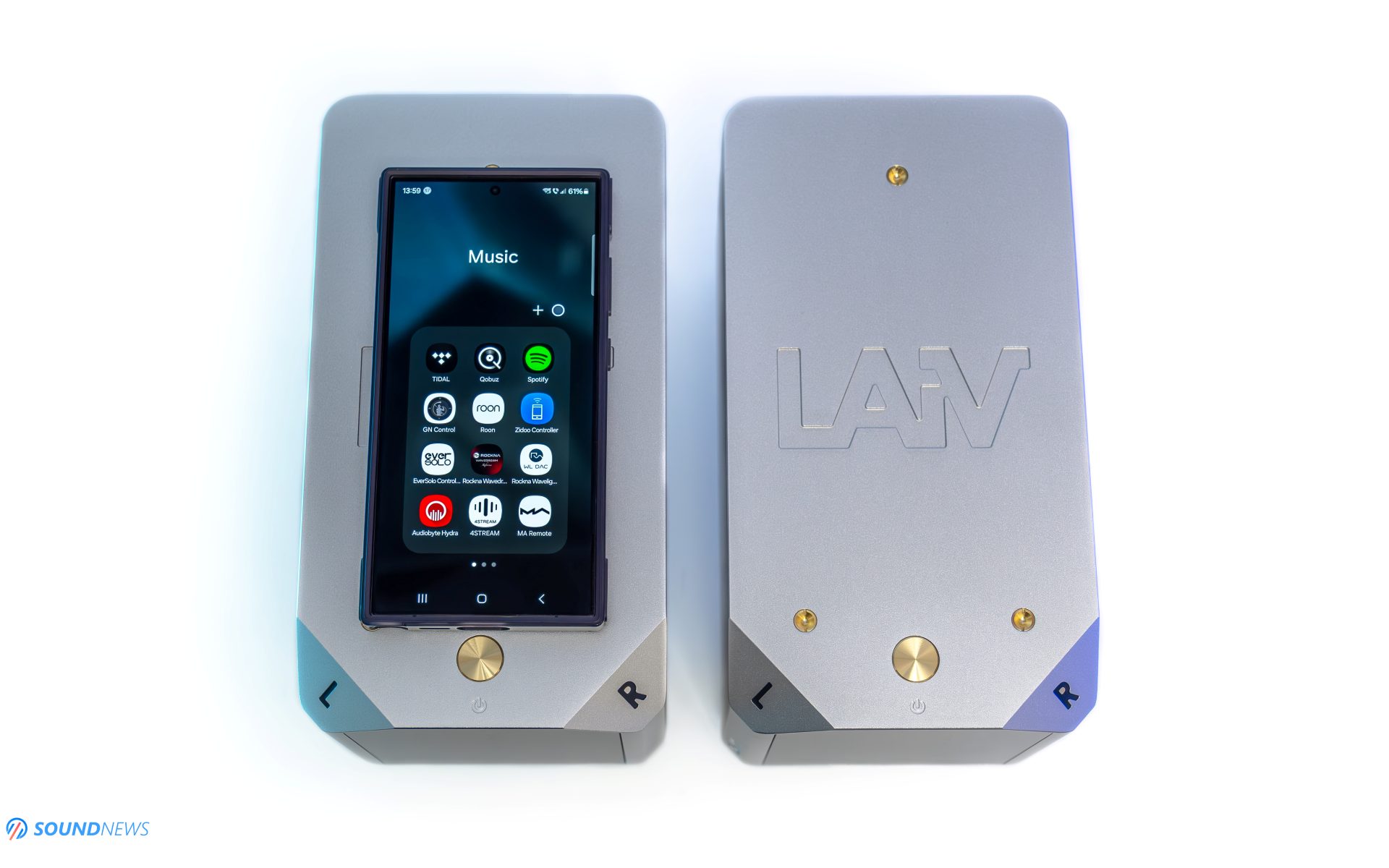
Design & Build Quality
LAiV understands that the magic starts long before you hear the first note. They care about every aspect, from the joy of unwrapping to years of sonic bliss and I must admit, I’ve never had a better unboxing experience.
If you’ve already checked out my reviews of the Harmony DAC and HP2A, you’ll know exactly what to expect from the Harmony GaNM. And sure enough, the build quality is at a similar level (read: stratospheric). The Harmony DAC was among the best-looking DACs I’ve experienced, and the same can be said for their HP2A, now extended to the GaNM monos. From the sand-blasted finish, unibody casework, metallic feet, high-quality connectors, large monochrome OLED screens, user interface (UI), and overall user experience, LAiV left no stone unturned, ensuring everything feels just right. They even considered future developments, including hollow resting places on top of their cases. I can now place the HP2A on top of the Harmony DAC or vice versa, and I see the same resting places on the GaNM mono amplifiers. Can you stack one on top of the other? Absolutely!
While these pack a serious punch with inefficient loudspeakers, their footprint will raise eyebrows. The surface area they occupy is slightly larger than that of a modern smartphone, they are literally just a bit bigger than the palm of my hand. And although I’ve previously tried petite-looking Class-D amplifiers, these two take the cake as the smallest and most compact amplifiers I’ve had the pleasure of tinkering with.
Not everyone has the space or the funds for oversized electronics beautifully arranged on a dedicated audio rack. If you’ve read some of my articles, here’s a spoiler: everything placed on the lower shelves, plus one spacer on top (four in total) with the Harmony stack, will now occupy just one single spot on my audio rack. It’s unbelievable, but four Harmony devices won’t take up much space. Here’s an idea for future LAiV releases: a small rack specifically designed for the Harmony lineup.
Perhaps the coolest thing about these tiny amplifiers is that their front panel is now entirely occupied by a 3.83” monochrome OLED screen with a 320×132 pixel resolution. Can you believe there’s even a digital VU meter and a simplified UI that can be operated with just a single button?! Weng Fai Hoh, the face behind the brand, has once again outdone himself as a designer and UI developer.
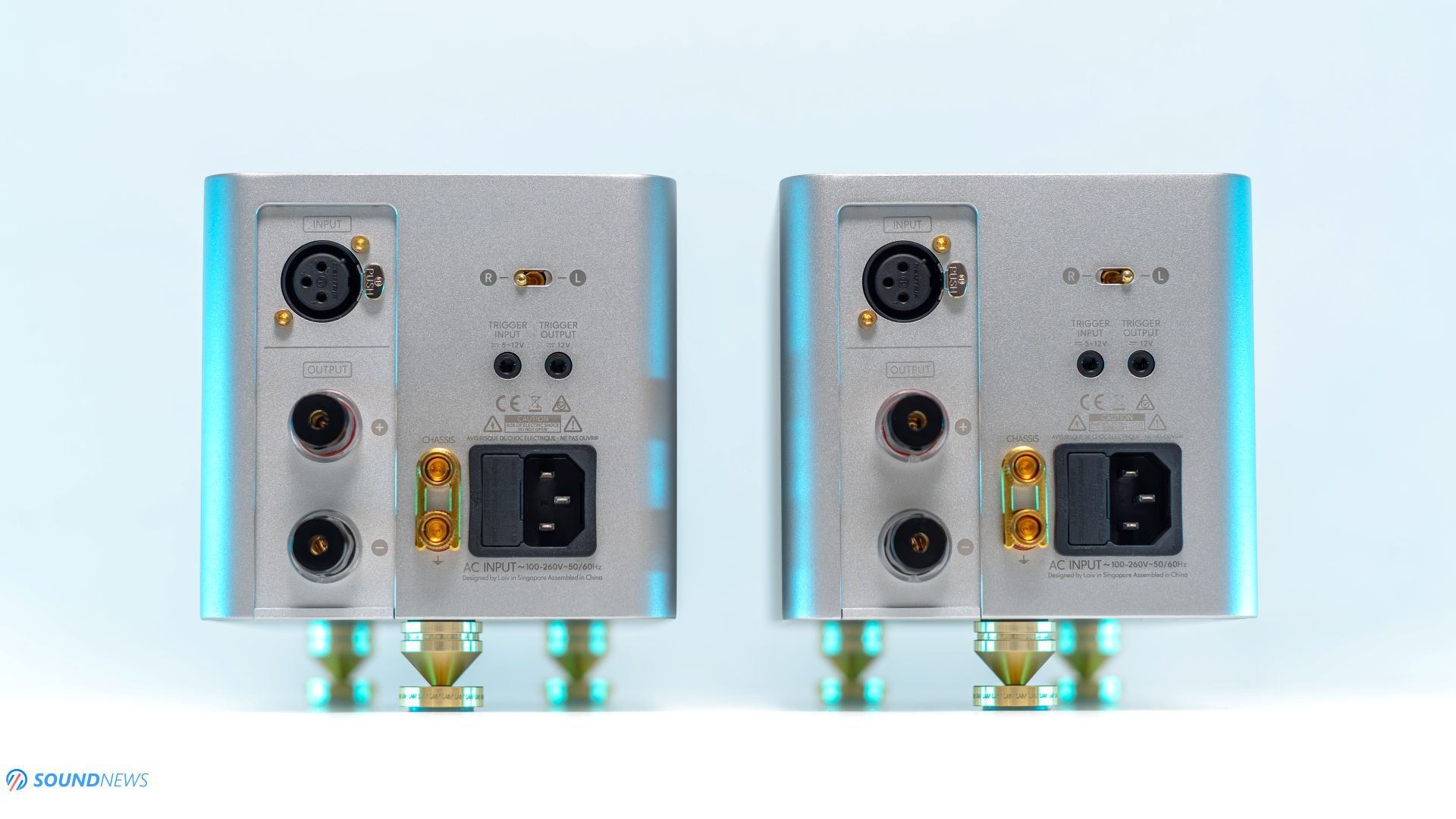
Controls & I/O
There’s just one button on each unit, and yes! You can navigate a simplified UI and change a few settings. A short press scrolls through the menu, while a long press selects the desired option. You can adjust the screen brightness, set the screen timer, choose the power range at which the VU meter operates, and if you want a more playful VU meter, I recommend changing the default 0–200W range to 0–50W. In truth, you don’t need that much power to start enjoying your music, even with low-sensitivity loudspeakers.
Looking at the back, it’s obvious these are balanced-only mono amplifiers, as you won’t find any RCA inputs. Considering that their tiny Harmony µDAC is also a balanced-only DAC, it now makes sense why LAiV Audio chose XLR inputs instead of RCA connections.
A mechanical switch allows you to select the desired channel (labeled L or R on the front panel). The speaker terminals appear to be of high quality. If you want to power everything with a single remote control, a trigger in/out is located on the back. If you experience ground loop issues, you can ground their chassis, and an IEC inlet with a fuse holder completes the setup.
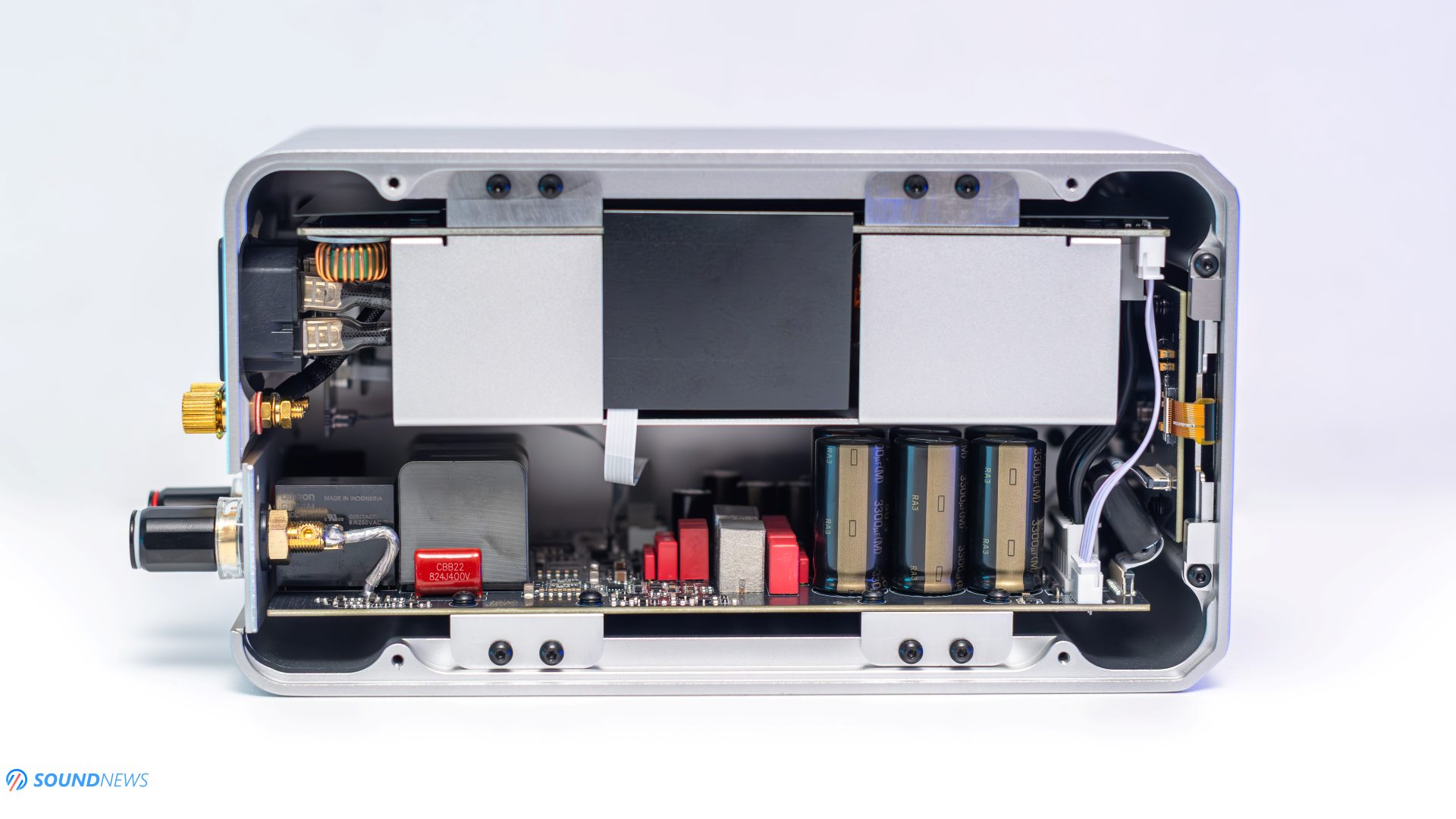
Under Their Hoods
With a Torx T8 screwdriver in hand, I opened up the Harmony GaNM enclosure. Unsurprisingly, everything is well arranged like a LEGO Technic set, and it seems that every square inch was put to good use. There isn’t much to see through the small openings, and I now understand how so much technology was crammed inside.
One of the most significant aspects contributing to its unique design is the use of Gallium Nitride (GaN) MOSFETs, first introduced by AGD Productions Inc. a few years ago. Today, many companies produce Gallium Nitride transistors, but LAiV chose those from Infineon Technologies, which are specifically designed for audio applications. So, what’s the difference compared to regular silicon-based NPN, PNP, JFET, and MOSFET transistors? GaN transistors are designed for ultra-fast switching, making them ideal to use in Class-D designs. That’s exactly what we have inside the GaNM monoblocks. The super-fast switching of GaNs reduces the distortion typically associated with silicon-based transistors working in a Class-D configuration, resulting in much lower distortion. How low? About 0.8% at maximum power output.
While we are dealing with a switching-mode power supply, this is not your ordinary Meanwell power supply found in most Topping and SMSL devices. Oh no! This one was custom-built from the ground up and occupies roughly half of the internal space. Premium components have been used in crafting this power supply, including Infineon’s Silicon Carbide (CoolSic™) MOSFETs, known for their high efficiency, low resistance, and extended lifespan. The filtering stage consists solely of high-quality Rubicon electrolytic capacitors – yes, the same brand that produced the legendary Black Gate caps for about 17 years.
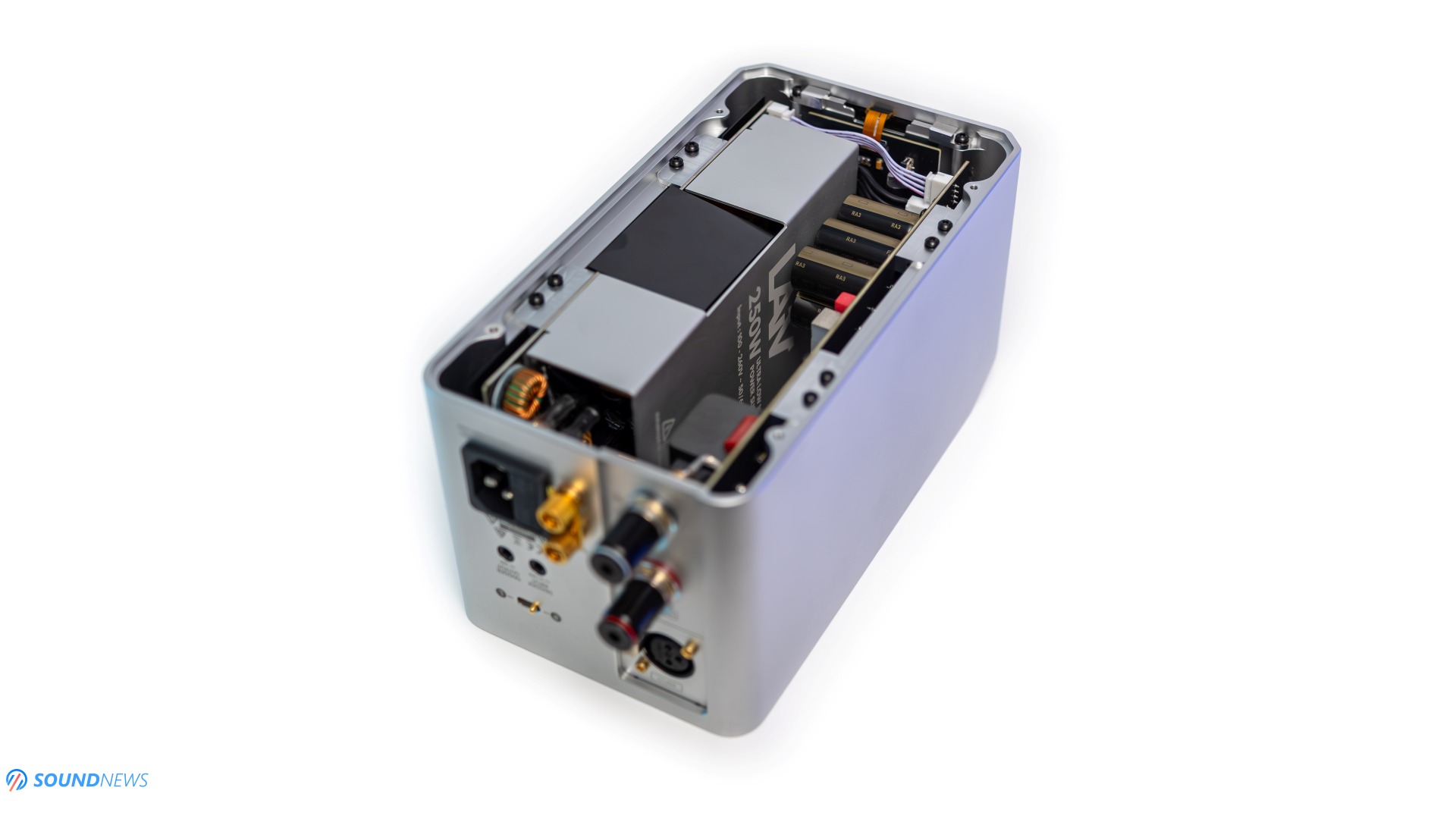
But wait, the coolness factor of this power supply isn’t just its super-efficient operation, but also the inclusion of several bulletproof protection systems. Yes, multiple protective systems are in place to safeguard your precious speakers and the amplifiers themselves. This 250-watt ultra-low-noise power supply also plays a crucial role in protecting delicate electronics against damage, thanks to over-voltage, under-voltage, and over-current, offering a powerful surge protection system not only for your amplifiers, but also for your precious loudspeakers. It also supports a wide input voltage range from as low as 90V up to 264V and, yes, you can use it anywhere in the world.
By combining the incredibly efficient 250 ULN power supply with super-fast switching GaN MOSFETs biased into Class-D operation, these monoblocks deliver up to 200 watts per channel at 8 ohms and 400 watts into 4 ohms. These are astonishing numbers, and a few years ago, I could never have believed so much power could be packed into such a petite case. Thanks to modern technology, hi-fi monoblock amplifiers no longer need to resemble refrigerators that double your electricity bills.
Consuming just 250 watts at maximum power and only 0.3 watts in standby, these amps exemplify high efficiency in amplifier design.
In short, these tiny units operate in a fully balanced configuration, built with only high-quality components, and most of their circuitry is custom-tailored. They are highly efficient, extremely powerful, and won’t elevate distortion levels to dangerous thresholds even at maximum power.
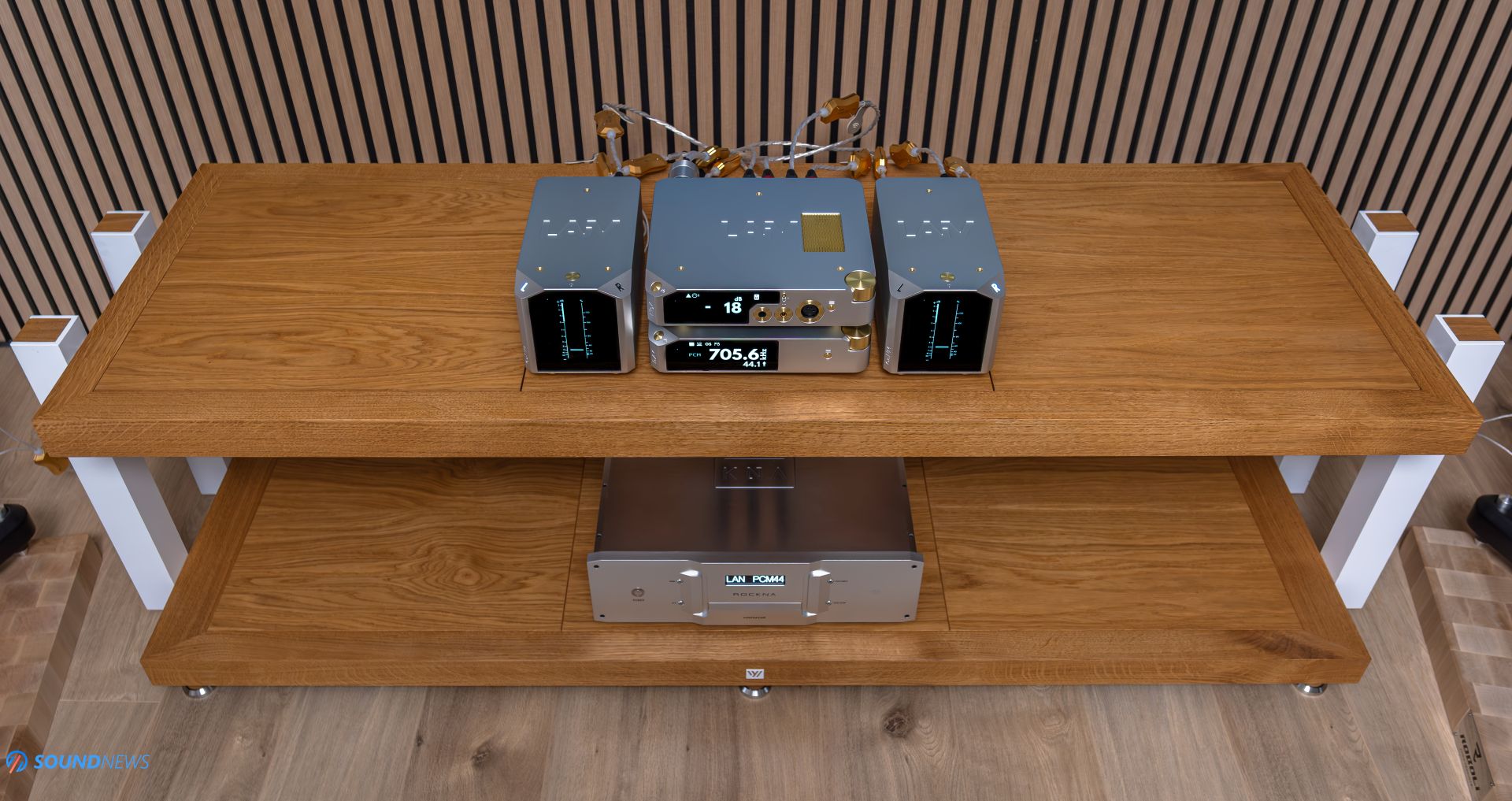
Test Equipment
What would be the best partners for the Harmony GaNM mono amplifiers? Naturally, a family reunion with the rest of the Harmony lineup would ensure the best synergy between the components. Since I wanted a clearer view of LAiV Audio’s house sound, I naturally brought along the Harmony R2R ladder DAC and the complementary HP2A preamplifier, both designed to work seamlessly with the GaNM monoblocks. For fun, I also tested these with my own setup, and in both cases, I had plenty of headroom at my disposal. They handled quite a difficult load – the Raidho TD 2.2 loudspeakers with their 87dB sensitivity. The biggest challenge wasn’t their low sensitivity per se, but the super-stiff tantalum diamond woofers that require extra power to be fully controlled. The planar tweeters are also highly sensitive to noise coming from downstream equipment, which puts additional pressure on every component in the HiFi chain.
Alright, everyone, I’m ready for some well-deserved music, so let’s hit some eardrums!
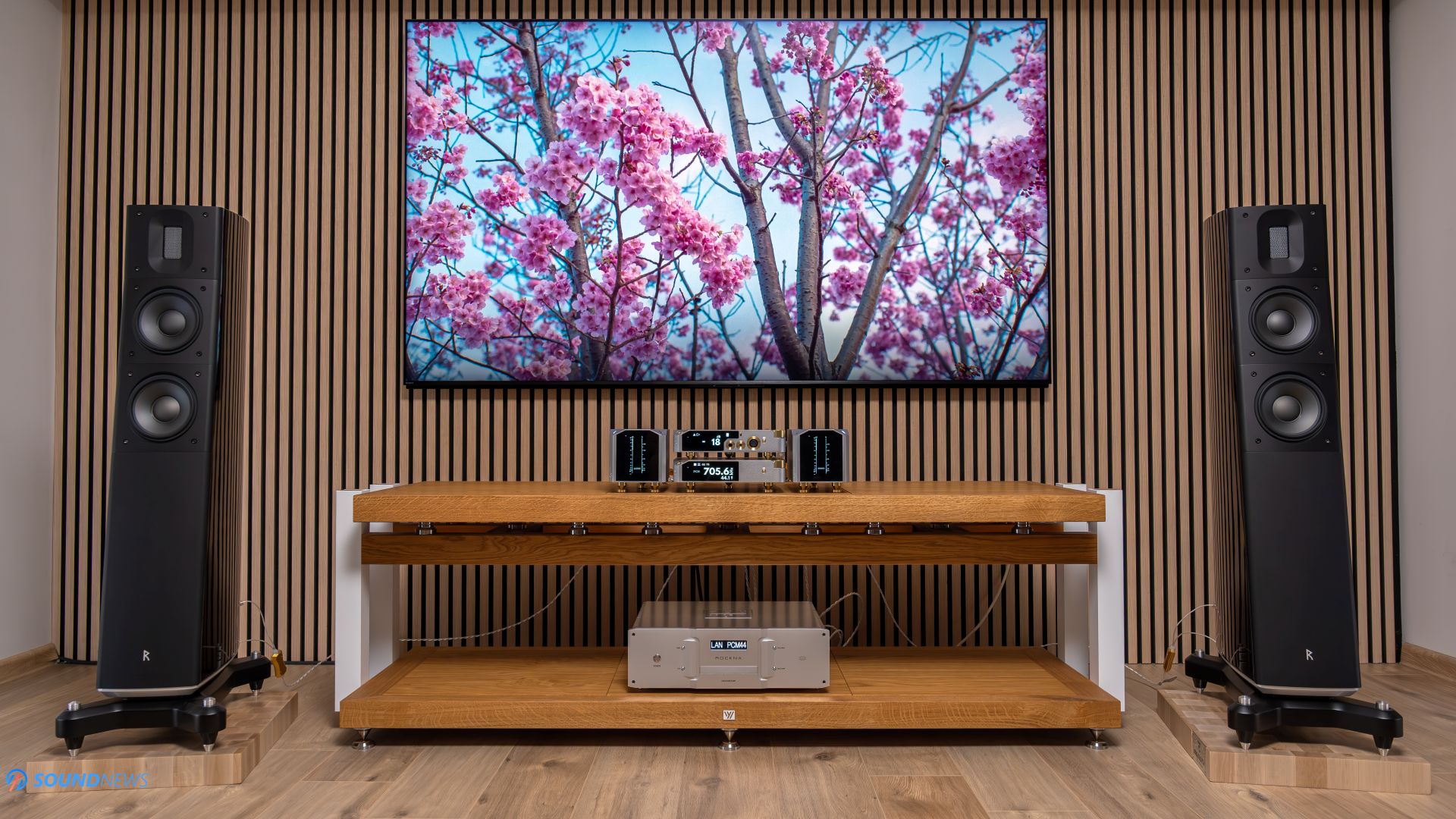
Sound Performance
I. Preliminary Sound Impressions
With everything set up, let’s focus on the most important part of this review. And what better way to test the GaNM monos than in a full LAiV Audio setup, with just a Rockna Wavedream NET Roon server providing the tunes for the Harmony DAC to decode?
I grew up reading countless HiFi magazines and later online publications, all of which have been singing the same tune for over 20 years. That tune was all about discrete components, crazy-large MOSFETs biased into Class-A operation, all powered by gigantic linear transformers. I believed these words, and we all fell into that trap. Sure, all those oversized, massive, and often overpriced amplifiers were supposed to sound great, portray a vast soundscape, and teleport you back to a time when things were simple and straightforward.
Today, energy regulations are everywhere! They’ve had a positive impact on our planet, but the early years weren’t kind to TV enthusiasts or HiFi lovers. Most high-end TV manufacturers had to find new ways to maintain brightness while lowering power consumption. The same thing happened in HiFi. People were initially desperate, fearing that great sound would become a thing of the past. In just a few years, Class-A amplifiers were destined to be buried and forgotten.
Fortunately, innovative engineering came to the rescue. Nowadays, even Class-AB amplifiers can sound as rich and tight as their Class-A counterparts, and gigantic linear transformers are no longer a necessity. High-end switching power supplies are gradually, but surely, making their way into HiFi electronics. My current monoblock amplifiers are biased into Class-AB operation and utilize five sets of switching-mode power supplies. Yet, they’re still some of the nastiest amps I’ve tested recently.
The LAiV GaNM amplifiers are even more exotic in terms of technology. Gallium Nitride (GaN) MOSFETs, for instance, weren’t originally intended for audio amplifications, yet today they’re revolutionizing the HiFi. Whether you like it or not, Class-D, switching mode power supplies, and GaN MOSFETs are becoming standard in most upcoming amplifiers – power, integrated, or headphone amps alike.
Reading all those HiFi magazines for years, I still hold some preconceptions, though now, they’re only seeds of skepticism. I have a small dose of doubt, especially when it comes to monoblocks that fit in the palm of your hand. I’ve tried a few small power amplifiers before, but they were never truly impressive. I wouldn’t recommend them to my peers, and even to my close friends. My colleague, Catalin, prefers traditional tube-based SET monoblocks biased into full Class-A operation; he swears by the Trafomatic GLENN monos, controlled by a tube-based preamp, the Trafomatic LARA.
I still believe that Weng Fai Hoh and his team, with their long history of working across both analog and digital domains, still have golden ears. They know that old-school music lovers aren’t as concerned with measurements as they are with the visceral feelings, the butterflies in our stomachs, where music truly works its magic.
I’ll be blunt and honest with you: these amplifiers didn’t deliver the thunderous performance in the bass that the Ultima 3 monos give me daily. But their power output, headroom, driver control, and stereo separation were all outstanding! Even some sense of naturalness crept into those tiny circuit boards, and please don’t ask me how such tiny units could infuse soul into my music, but I kid you not, these amps have more soul and substance than my former Benchmark AHB2 monos, which are, by the way, pricier.
Perhaps the biggest surprise I experienced with the GaNM monos was the sheer power and control I gained from these petite-looking HiFi toys. And let me explain why. In the initial days of testing, I decided to use my own system, with everything unchanged except for replacing the Chord Ultima 3 monoblocks. I replaced the Ultima 3s with the Harmony GaNM, let them run for two days straight over a weekend, and then sat down for a long listening session. My Ultima PRE2 preamplifier is always set at 0.5 gain, meaning it halves the power output. Therefore, the GaNM amps were naturally limited by a much lower gain and power level.
My Raidho TD 2.2 speakers are also quite demanding to control for perfect dynamics. They usually demand gobs of power for immaculate transient response, they need all of that juice for a lightning-fast start and stop of drivers that can stop on a dime if needed. The Ultima 3 monos deliver 480 watts per channel at 8 ohms and about 900 watts into 4 ohms. These are the epitome of overwhelming power, and, sure enough, they always deliver Thor’s thunder and Zeus’s fury when called upon. Huge dynamic peaks, ten-second bass sustains? Child’s play for them. And don’t even get me started on the remaining headroom. I don’t recall using more than 25% of it.
Now, imagine my reaction when I heard and later measured a very similar SPL coming from my speakers while never exceeding a volume of 45 (out of 100 steps available) on my preamp. I was hitting about 110 dB peaks in the mid-bass, the room was already shaking in sync with the music, and yet, I couldn’t push it any higher! The Harmony GaNM has all the power you could dream of! If these small amps can beautifully control a pair of speakers with a sensitivity of 87dB without even touching 50% power, then I’m confident they can drive almost anything except perhaps some monster loudspeakers that might need a small nuclear reactor to be fully awakened.

II. Dynamics & Transient Response
It’s no secret anymore that I dislike slow, polite, and mellow-sounding amplifiers. They put me to sleep and bore me to death. Engagement factor and impressive dynamics are some of the most important qualities I seek in world-class amplifiers.
Even without any burn-in, the Harmony GaNM monos revealed themselves as incredibly energetic and alive. I still don’t understand how such tiny units can sound so speedy and tightly controlled in the lowest octaves, but they do!
They don’t deliver chest-pounding bass levels, but they still provide a lot of fun and possess a meaner attitude compared to the Benchmark AHB2 I used to own. If you’re coming from affordable Topping or SMSL amplifiers, prepare for a big surprise, as the change will be dramatic, to say the least.
I remember being disappointed by the Topping LA90, which a certain website hyped to the stratosphere, lauding it as the best-measuring amplifier, ever blessing their test benches. For me, it was the only amplifier where I had so many complaints. That CON list? It’s a thing of legend! (See for yourself). The LA90 lacked grunt, power, and had almost zero headroom remaining on tap. I was pushing it to the limits, and it didn’t sound great, choking down most of the bass energy. The LA90 was all grunt and no meat, like a roaring lion with the ferocity of a kitten. While with the Harmony GaNM, I’m at a completely different level. The power seems almost limitless. I can’t reach its upper power limits, and that makes it a breeze when electronic music hits the dance floor.
Be it the deep-reaching Symbolico, the oriental Infected Mushroom, the calming Massive Attack, the galvanizing Chemical Brothers, or the rebellious trio of my youth, The Prodigy, the GaNM monos handle excess bass energy effortlessly. Even at lower volumes, the low rumbling energy persists. With such amplifiers doing the heavy lifting, you won’t need to reach 90 dB or higher for some eardrum massaging sessions, as the bass notes will sound vibrant and lively even at 50 dB or lower.
The ancestors of the Golden Horde banded together in 2019, and since then, they’ve grown bigger and heavier. Using traditional Mongolian instruments such as the Morin Khuur (horsehead fiddle), Tovshuur (Mongolian guitar), Tumur Khuur (jaw harp), and guttural throat singing built around heavy rock with tons of distorted guitars, bombastic drums, and aggressive rhythms, they’re perfect when morning coffee doesn’t quite do the job and more energy is needed to get through the day. I’ll see them live at the end of June, but until then, streaming platforms are great for enjoying their loud hymns. Rumble of Thunder (found on Qobuz and Tidal) sounds exactly as the album title suggests. From the first drum hit and horse fiddle strum, you quickly realize these won’t go all Diana Krall on you. Quite the opposite! Expect fast, relentless, hard-hitting tracks that awaken your DNA from a deep slumber.
The Harmony DAC doesn’t provide the fastest pace, rhythm, and timing, but the HP2A, along with the GaNM monos, brings transient responses back to their glorious form. The sound is undeniably heavy—each second filled with guttural throat singing, punchy bass lines, and double drum solos that keep your senses alert, no matter what. Some people can multitask while listening to music, but I find it impossible, especially with The HU, considering the number of bass and treble peaks they reach every second. The lightning-fast switching of GaN FETs revitalized this album, and while the bass energy levels weren’t elevated as they are with my own amplifiers, the sound never lost control.
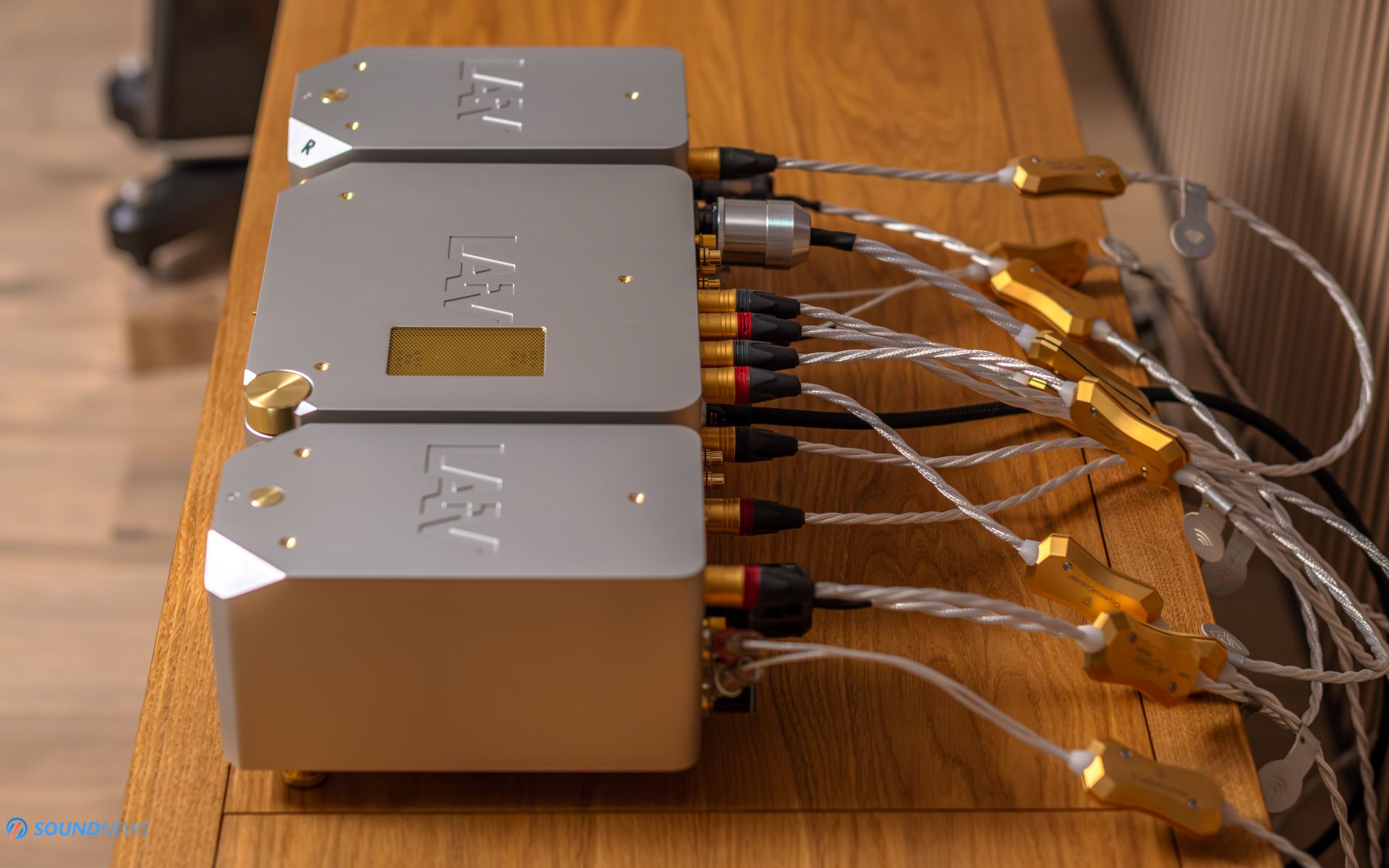
III. Soundstage & Imaging
Before diving into the soundscape these amplifiers produce, let’s first explore what channel crosstalk is and how it affects sound. Channel crosstalk is a pesky distortion; it’s essentially the volume at which the left channel intrudes into the right channel, reducing stereophonic imaging, the lush left-to-right landscape where sounds originate. Because L and R analog circuits often reside close to each other, crosstalk can result from unwanted capacitive, inductive, or conductive coupling leaping from one channel to another. When sound leaks from one channel to another, some amplifiers experience more of this, reducing stereo separation. Larger amplifiers usually have lower channel crosstalk since the circuits are no longer cramped, sharpening the stereo image and widening the soundstage in all directions.
However, zero channel crosstalk is achievable (yes, ZERO!), but only with mono amplifiers. Here, the signal paths aren’t intertwined anymore. Each dedicated amplifier drives a single loudspeaker without interfering with the other, eliminating this distortion entirely. By design, mono amplifiers like the Harmony GaNM don’t suffer from channel crosstalk. When you choose mono amplifiers, you’re bypassing one of the nastiest distortions possible in amplifier design while gaining better driver control. It’s a win-win. In terms of function, design, and sound quality, mono amplifiers are, without a doubt, among the best money can buy.
I decided to focus my attention today on live records. With the recent release of Pink Floyd at Pompeii – MCMLXXII (2025 Mix) available on Qobuz and Tidal, I had my refreshments ready and let it play from start to finish. Albums like this invite you to experience music in a completely different way, and I can only imagine how profound the experience must have been for those present live. This isn’t just a collection of songs performed by a band for an audience; it’s more like a mass euphonic hypnosis unfolding before my eyes. The album fully relaxed me; hearing the crowd sing in unison transported me there, making me feel like I was singing along. Unsurprisingly, the sound enveloped me completely as these tiny amps painted a vast auditory picture not only in front of me but encompassing my peripheral vision as well. With the right tools, sound can become expansive and deeply immersive. Wide dispersion loudspeakers or open-baffle ones naturally achieve this effect, but additional tools push the foreground sounds closer while sending background subtleties far back, away from your sweet spot. As far as I know, mono amplifiers are the second ingredient to widen and deepen this auditory canvas.
In absolute terms, the Harmony GaNM will not outperform Single-Ended Triode (SET) monos or high-current solid-state Class-A monos, but they still unlock your imagination and set it free. I still have around the house the Burson Timekeeper GT monos, priced slightly below the Harmony GaNM at $4000. While they boast stronger dynamics with bass-intensive music and offer a faster pace, the Timekeepers didn’t seem as wide and open-sounding. I’m not sure if that’s due to power levels where the Harmony GaNM easily wins, but it seems the extra headroom of the GaNM monos further relaxes the sound, letting it roam freely throughout the room.
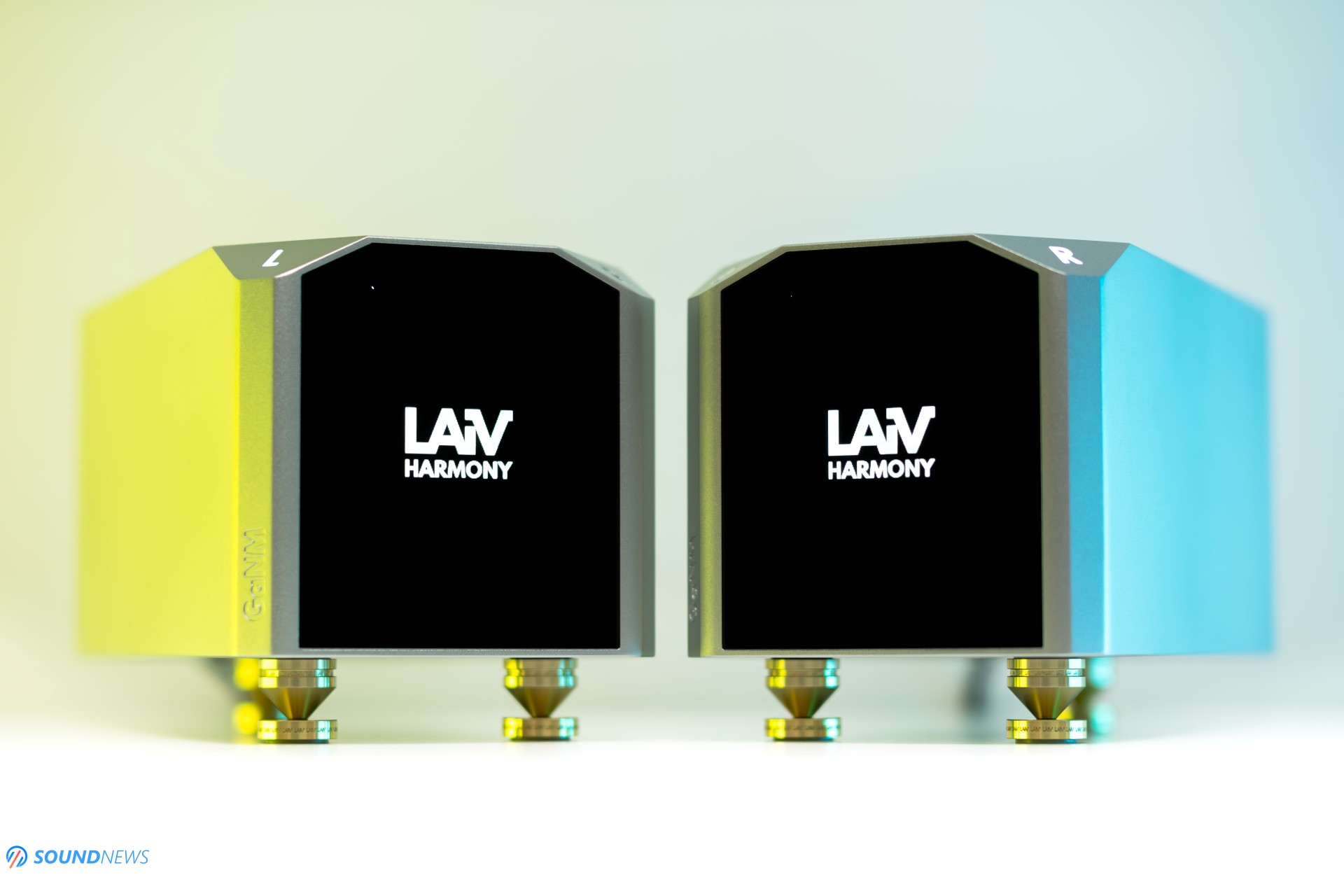
IV. Resolution & Transparency
Instead of opting for the regular silicon-based transistors such as NPN, PNP, JFET, and MOSFET, found in most amplifiers, LAiV Audio chose to use Gallium Nitride (GaN) transistors, a trail first blazed by AGD Productions Inc. a few years ago. Gallium Nitride transistors are specifically designed for ultra-fast switching, making them ideal for Class-D applications rather than Class-A or AB, and that’s exactly the technology LAiV Audio incorporated into their Harmony GaN monoblocks. A paper published by EPC-CO.com in 2020 explains the fundamentals of Gallium Nitride transistors, and you can find it here. In brief, “GaN transistors will bring a leap in Class-D audio technology by enabling efficient switching at frequencies above the AM band. Fidelity will approach Class A and Class AB systems without all of the size and weight limitations of linear amplifiers. They will allow high-quality amplifiers to be built into very tight spaces such as flat-screen televisions, computers, and speakers.”
The paper also concludes, “Gallium Nitride transistors bring tremendous performance and size advantages over silicon. These advantages can be applied to gain efficiency advantages, size advantages, or a combination of both, with application requirements and a cost structure that are similar to silicon. To take full advantage of GaN, power architects should rethink their systems. The future of GaN transistors is now.”
All of this translates into almost instantaneous switching of the transistors, resulting in lower distortion within the audio circuit compared to regular Class-D silicon transistor-based amplifiers. The 250-Watt Ultra Low Noise power supply also plays an essential role here, not only offering protection systems like over-voltage, over-current, under-voltage, and surge shielding but also supporting a wide voltage input (from as low as 90V up to 264V). It features premium components like Infineon’s Silicon Carbide (CoolSiC) MOSFETs, known for their high switching efficiency, low resistance, and extended lifespan. Add Rubycon electrolytic capacitors (the creators of the legendary Black Gate capacitors back in the day) at the filtering stage, and you can forget about notions like an audible noise floor. With the ULN power supply, Class-D operation, and ultra-fast switching GaN MOSFETs combined, the noise floor becomes a thing of the past. This is my first power amp review that doesn’t contain a chapter dedicated to noise floor because, try as I might, even sitting closely to the planar tweeters of the Raidho TD 2.2, I couldn’t detect any hum or buzz emanating from the tweeters.
When the noise floor becomes so low, it speaks the universal language of transparent amplifiers that don’t hide anything from the listener. Free of large toroidal transformers and huge banks of energy-storing capacitors, with a direct path to its power stage, the sound’s transparency and detail retrieval is unlocked. Every time I powered them on, I could hear low-intensity notes that wouldn’t appear on lower-tier Class-D amplifiers I’ve tried in the past. The measured signal-to-noise ratio (SNR) isn’t so high, sitting at just 95dB, yet the sound appeared as clear as it is on my own mono amplifiers. The objective (as measured) and subjective (as heard) sound impressions rarely align, yet the Harmony GaNM monos defy the measured SNR, performing on the same level with Burson’s Timekeeper GT, and even with Chord’s Ultima 5 and Ultima 3 amplifiers.
The next phrase might sound odd to you, but their detail retrieval was also tested with a revealing set of planar headphones. Yes, headphones! But make no mistake, the HiFiMan Susvara Unveiled are not your typical planar headphones. They require more power than most passive loudspeakers for a similar measured SPL. With Susvara Unveiled, I bypassed room acoustics, allowing me to hear everything these amps could deliver. Once again, I experienced some déjà vu moments, as the Harmony GaNM went toe-to-toe with the Timekeepers GT and Ultima 3 in sound cleanliness, and for me, that’s more than enough.

Frequency Response
V. Bass
Whenever I get new amplifiers to play with, the first thing I do is push their limits! Weak power stages and mediocre power supply designs usually translate into poor bass performance when lots of clipping occurs, seriously downgrading the bass energy, control, and impact. The infamous brick wall effect present on low-powered amps didn’t happen with the Harmony GaNM; the bass didn’t hit an invisible wall that would diminish its impact and overall dynamics at lower volumes.
I was pleasantly surprised to get a clean bass output with good control of the lowest octaves, even when reaching 110, sometimes even 115 dB peaks in the mid-bass region. I couldn’t prolong these tests for hours on end, as police would be knocking at my front door. However, in less than 10 minutes, it was clear that the Harmony GaNM would easily deal with bass-intensive music, even when long bass sustains were necessary. Angel by Massive Attack (found on Qobuz and Tidal) usually clips the sound with weak power stages, but the LAiV monos sounded fierce, alive, and kick-ass. Comparing back and forth with my own Ultima 3 amplifiers made it obvious: the LAiV creations weren’t exactly as scary-sounding in the bass, I found them almost as tightly controlled, but let’s not forget the substantial price difference. Nonetheless, even if I no longer have the Benchmark’s AHB2 monos by my side, I don’t recall them being so energized and fierce with all sorts of electronic tunes. The bass extension remained superb, the quantity remained almost untouched, and the quality stayed consistently high, no matter what track I played. The bass remained visceral no matter what, and it always maintained a faster pace. It’s a hit-and-run bass, perfect for modern electronic music, yet rounded and smooth when it comes to jazz and blues. This dynamic character shifts seamlessly depending on the music, covering a wide variety of music.

VI. Midrange
It might seem odd to call a pair of Class-D amplifiers powered by switching power supplies an organic-sounding duo, but to my ears, that’s mostly how the Harmony GaNM presented themselves. The lively nature with boosted harmonics of the Harmony resistor ladder DAC and the extra substance of EXICON MOSFETs found in the HP2A boosted contrast levels and infused a higher dose of dopamine balanced out the tonality of the whole system, as the sound I’m experiencing right now could only be described as natural and dare I say – real sounding. There’s some sweetness here and there, and the textures are also quite weighty, but again, these are the traits of the whole LAiV Harmony eco-system, rather than of the GaNM monos on their own.
I won’t describe them as lacking warmth or sweetness; these weren’t clinical or thin-sounding by any means, and even if I perceive them as wire-with-gain amplifiers, staying true and clean to their core, they never appeared lifeless or plain boring sounding. Dynamics were still roaming wild, and acoustic music still highlighted the beautiful side of this hobby. The vocals were full-bodied and guttural-sounding on several occasions, unlocking a higher engagement factor with all sorts of acoustic music. There wasn’t a hardness to acoustic instruments, creating a foundation for an emotional connection with the music. And I don’t think you’ll be missing hefty mids or punchy bass lines with an amplifier like this.
Imperfect by The Mono Jacks (available on Qobuz and Tidal) beautifully captures the irresistible charm and allure of the midrange. Despite the album’s slightly distorted nature (a nod to its very title), listening from start to finish was a delight, with its imperfections adding character rather than detracting from the experience.
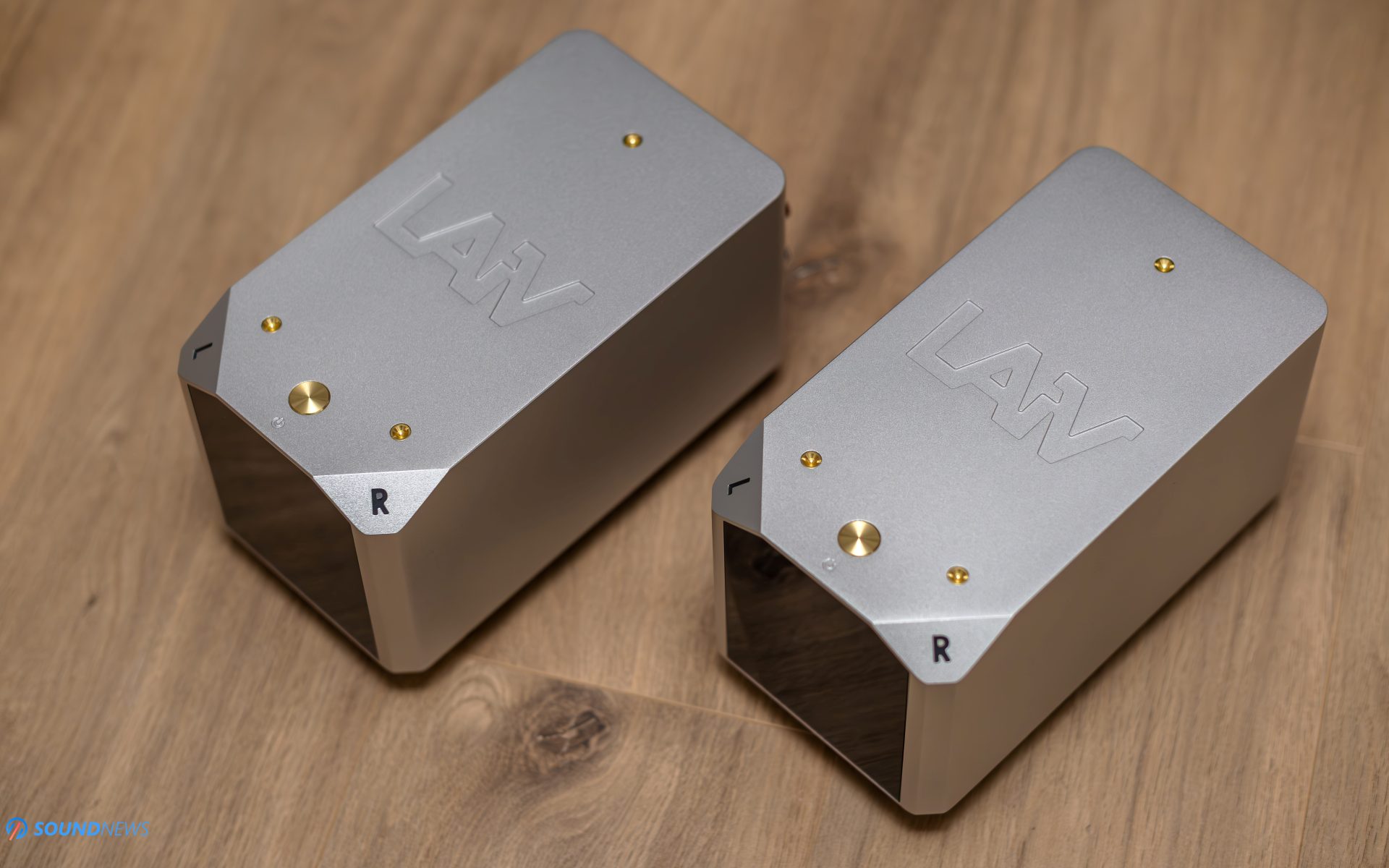
VII. Treble
Long story short, the trebles were refined, smooth, easy on the ear, yet crystal clear. The shimmer of cymbals clashing was razor sharp, yet the zinging sounds were not slashing my eardrums like sharp katanas.
These are neutrally tuned amplifiers, maintaining a strong balance in the frequency response and preserving the signal’s purity. While they might appear highly energetic in the bass with dense-sounding mids, they remain a linearly tuned duo, and you should expect a clean and defined treble delivery, rather than a smooth, rolled-off, and overly relaxed sound. Trebles still somehow boosted sound clarity, but without the usual letdowns such as brightness or listening fatigue. There’s some kind of magic happening that relaxes the leading edge of the notes.
In the end, I find them exquisitely clean, yet smooth and refined. They aren’t quite on the same page as the Chord’s Ultima 3 stack, especially when it comes to wild dynamics, tight control, and unlimited headroom, but they were quite similar when handling treble excess on loud rock tunes. And no matter what cables I used, the sound remained tight and precise.
At moderate listening volumes, the trebles were loud and clear but never artificial. In my view, the full Harmony stack is a match made in heaven with detail-oriented loudspeakers, providing the ultimate blend of technical mastery and musicality.
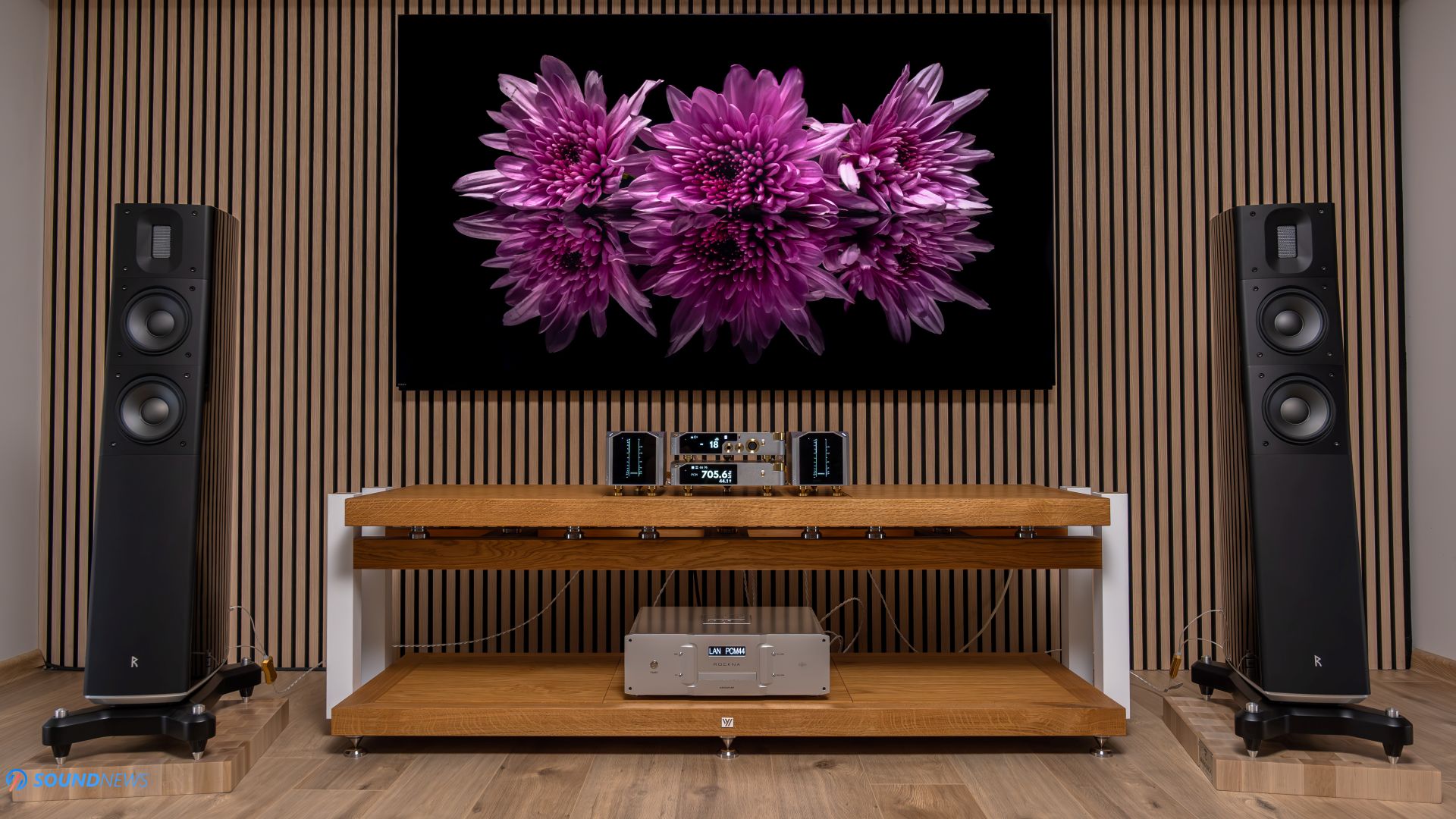
My Conclusion
A good deal of subjectivity always crawls under HiFi reviews, and it’s nothing we can do about it; we all have preferences. However, when considering everything: the specs, the component selection, the internal layout, the compact build, and the overall sound quality, then pound for pound, this tiny but mighty sounding power amp duo will change your view of Class-D amplifiers and/or switching mode power supplies. You’ll have to let go of old preconceptions, as while they don’t look like Class-AB amplifiers, nor do they consume as much power, they operate, sound, and behave like a pair of monster-looking amps.
These things have the footprint of a modern smartphone, they can rest in the palm of my hand. These are some of the tiniest mono amps I have experienced so far, getting smaller than what online pictures might suggest. Yet the power they produce defies rational logic, it’s the complete opposite of their size and weight, as these will drive any commercially available loudspeakers with aplomb, regardless of their working principle, with a ton a headroom still available on tap. I couldn’t go higher than 45 out of 100 levels available with the gain set at 0.5X on my pre, and with the HP2A in place, I rarely reached the upper power limits. The power output felt almost limitless, and thus things like clipping, distortion, or limited dynamics would feel like distant memories.
$4,495 doesn’t seem like pocket change, but I’m reminding you that this is the price for two mono amplifiers, as opposed to just one, as most HiFi makers are selling nowadays. I no longer have the Benchmark AHB2 mono amps at my disposal ($7,000), yet I still have vivid memories about them. The AHB2s are still great if you lust for an ultra-linear, dead neutral, and non-forgiving type of sound, with a somewhat limited power output. The Harmony GaNM, by comparison, will further enhance dynamics, tighten up the sound, and infuse a higher dose of dopamine into your bloodstream, especially with all sorts of acoustic music. These are by two notches more natural than the AHB2 duo, providing considerably more headroom on tap while never raising distortion numbers. More importantly, these are much more affordable than two AHB2 monoblocks.
While these don’t rock a linear power supply or a Class-AB bias, they bring along some of the thickness and tonal density such creations are known for. Weng Fai Hoh and the rest of the LAiV Audio team did a tremendous job with the Harmony lineup, as they sound exactly as they look.

It goes without saying that the Harmony GaNM impressed me, getting a Highly Impressive award from yours truly, and I’m looking forward to their next developments.
If you already own the LAiV Harmony DAC and the HP2A preamp/headamp, then getting the Harmony GaNM feels like the next logical step, completing a year-old puzzle and finally seeing the big picture. These units were designed for each other, they complement each other’s faults, ultimately getting a cohesive, entertaining, and timeless sound.
The LAiV Audio team has proven once again that outstanding sonics and striking aesthetics at down-to-earth prices remain firmly embedded in their DNA, and I hope they will never change that. The LAiV GaNM monos are currently available for $4,494 via their online store. You can also reach out to your local LAiV Audio distributor for pricing in your local currency. A list of authorized distributors and dealers near you can be found here. If you decide to take the plunge, but still have some burning questions, feel free to drop me a line in the comments section below.
PROS:
- A one-of-a-kind unboxing experience that runs in the family
- These are way smaller than what one would expect; these are TINY!
- The solid build quality, the elegant curves, you’ll want to display them proudly
- Bonus points for the space-saving footprint
- The inky black OLED screen with digital VU meters dancing to the rhythm of the music is a chef’s kiss
- The PCB layout is again a work of art, with top-notch components seen everywhere
- Bullet-proof protection systems will save your precious equipment from any harm
- Runs cool even under heavy loads
- Fully balanced from input to output
- Sounds quite natural, yet honest, always trying to connect with your music
- One of the widest and deepest sounding mono amplifiers I have experienced so far
- Lots of power on tap, these will easily drive low-sensitivity speakers of any kind
- Noise? What Noise? I found them noiseless in my revealing system
- Tamed brightness and listening fatigue
- These two nicely controlled excess bass energy levels
- A great bang for your buck!
CONS:
- Sometimes I desired a stronger kick in the lowest octaves, but only with a few particular tunes
ASSOCIATED EQUIPMENT:
- Digital Transport / Roon Server: Rockna Wavedream NET 4 Tb
- Network Switch: Ansuz PowerSwitch D3
- DACs: LAiV Harmony DAC, Rockna Wavedream Reference Signature
- Headphone Amplifiers: Cayin Soul 170HA, Feliks Envy Performance Edition
- Preamplifier: LAiV HP2A, Chord Electronics Ultima PRE 2
- Power Amplifiers: LAiV GaNM (X2), Chord Electronics Ultima 3 (X2)
- Full-sized headphones: HiFiMan Susvara Unveiled & Susvara OG, HE1000 Unveiled, T+A Solitaire P, Meze Elite, Erzetich Charybdis, Kennerton Rognir, Sennheiser HD800S & many others
- Loudspeakers: Raidho TD 2.2
- Interconnects: Crystal Cable Monet XLR (X2)
- Speaker cables: Crystal Cable Monet 2.5m
- Power Cables: Crystal Cable Monet 1.5m (X4), Neotech NEP-1001 (X2)
- Ethernet Cable: Crystal Cable Monet
- HDMI Cable: AudioQuest Dragon
- Balanced Isolation Power Conditioner: KECES IQRP-3600
- Audio Racks: Woodyard Suspended Triple & Baby Modular
